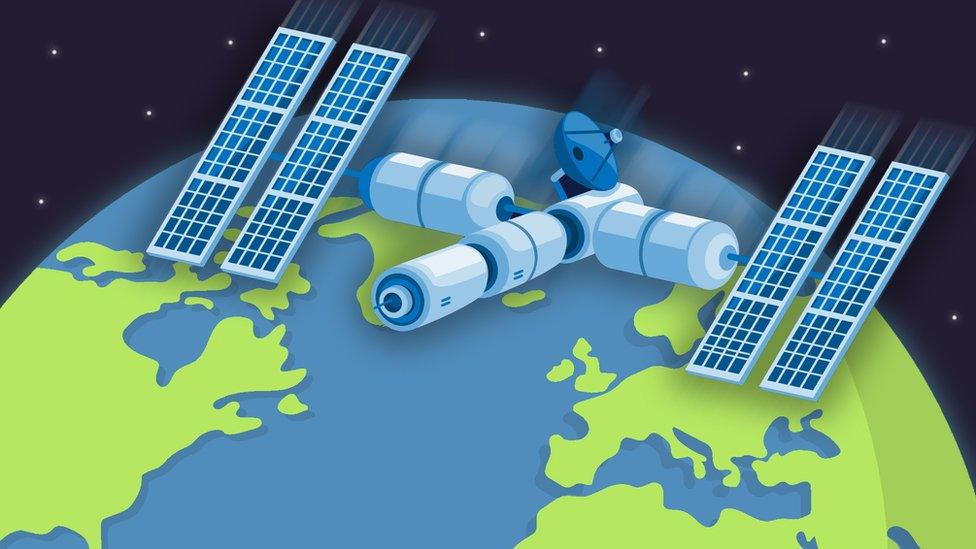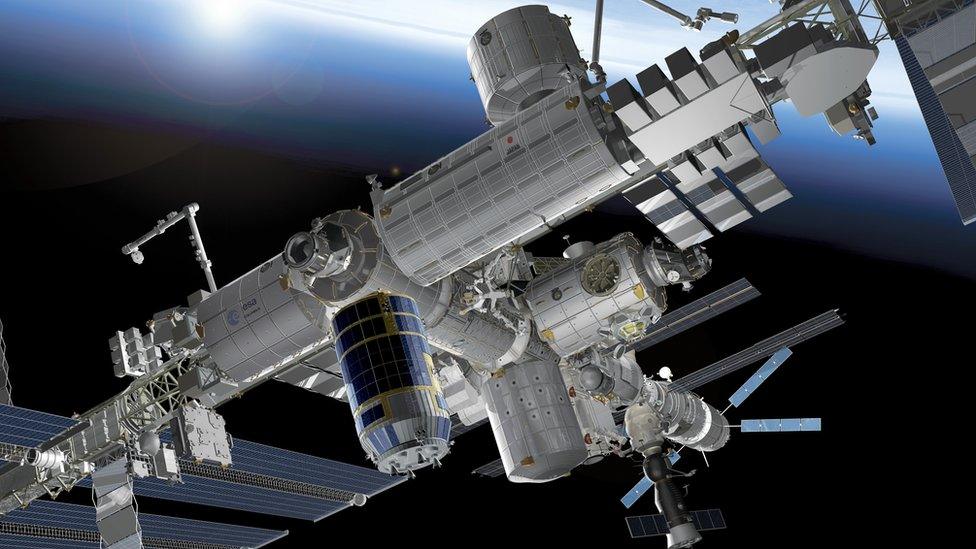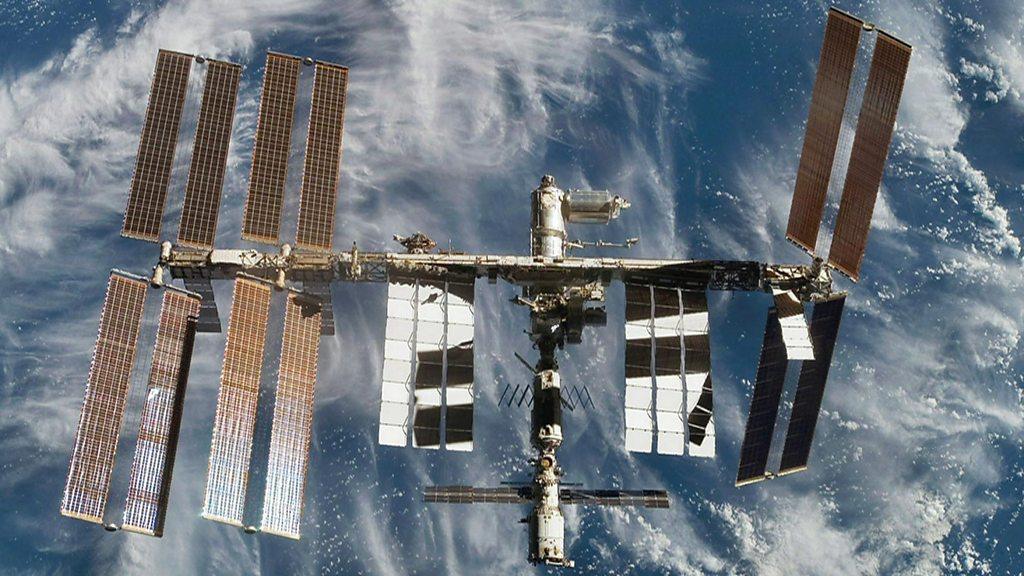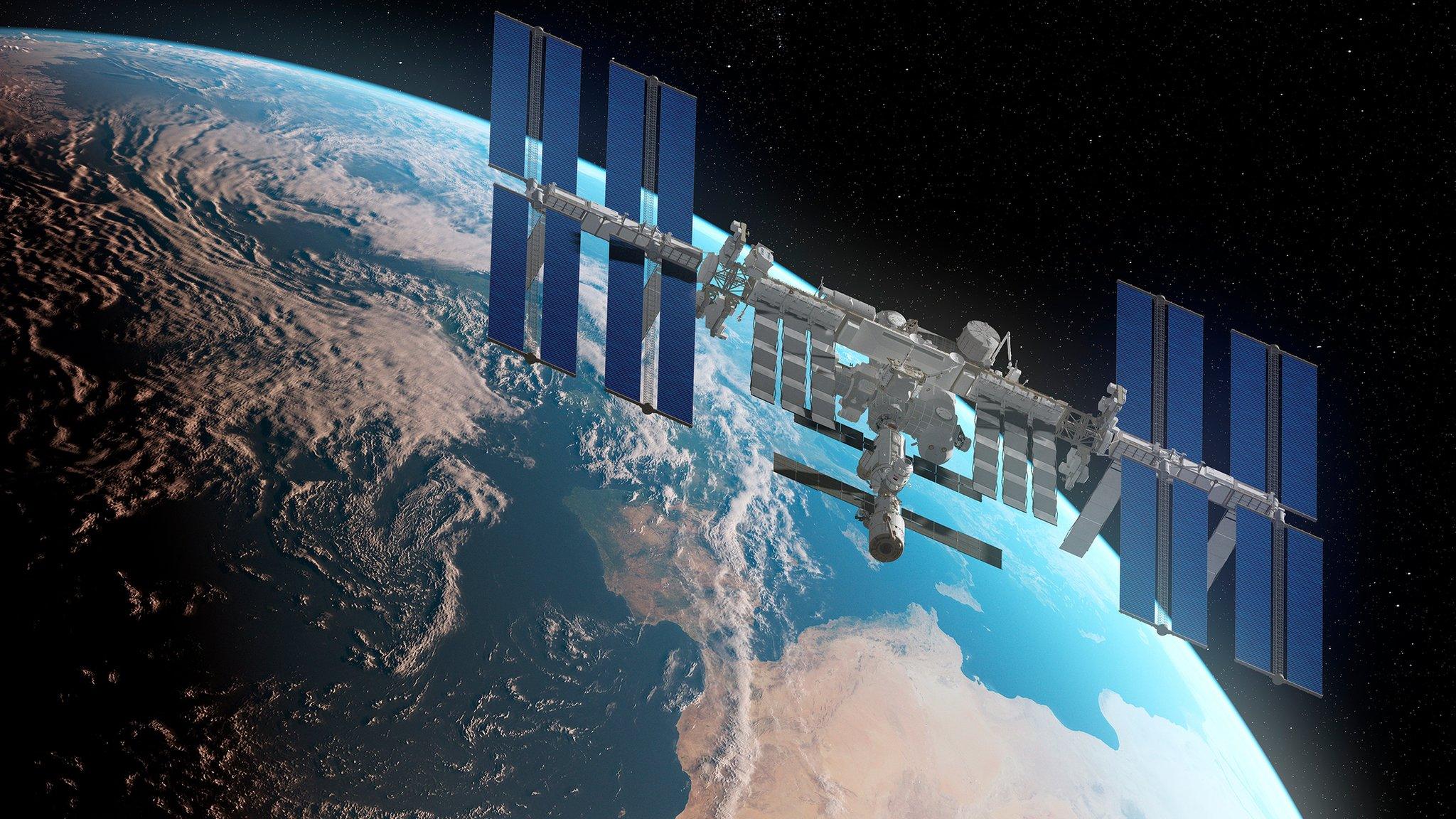Why will the International Space Station crash to Earth in 2031?
- Published
- comments

The International Space Station (ISS) is the ultimate dream destination for many scientists and astronauts.
Orbiting the Earth at a speed of five miles a second, this satellite has been the home to hundreds of astronauts since it first launched in 1998.
And while the ISS is an amazing achievement in engineering and space science, it cannot last forever.
This week, Nasa confirmed that there is a plan to have the ISS leave the Earth's orbit in 2031, causing it to fall back home and safely crash land in the Pacific Ocean.
What is the International Space Station? (2018)
While this might seem like a sad and dramatic end for the much loved ISS, it is a pretty common way to remove old satellites from orbit.
There's an area in the Pacific Ocean known as the Oceanic Pole of Inaccessibility, which is a fancy way for saying there is no human activity in this area.
So it's a very safe place for the ISS to crash down (or splash down) to, and it will join other satellites that have fallen in the same area.
And by the time that the space station comes to its watery end, it will have spent more than 30 years orbiting Earth.
This is double the lifespan that was first predicted for the ISS.
So what will replace the ISS when it comes to its end?

Photograph of the International Space station from 2011
Nasa says it may pay for their astronauts to spend time on commercial spacecraft instead of creating a new space station.
It's thought that this could save the space agency nearly £1 billion in 2031 - which could be put to developing other useful technology.
Phil McAlister, who is the director of commercial space at Nasa, said they hope that working with private companies will help Nasa to create "safe, reliable and cost-effective destinations in space."
- Published20 November 2018

- Published14 October 2019

- Published3 November 2020

